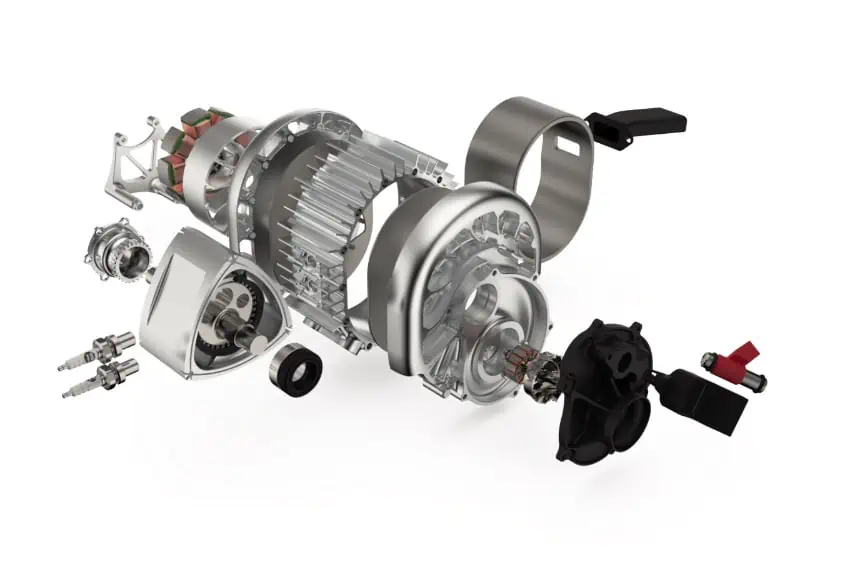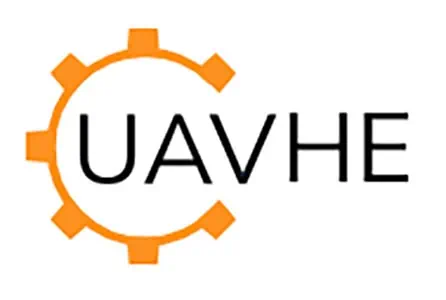
Many modern unmanned aircraft that are larger than the average multirotor sUAS (small unmanned aerial system) have significant power needs, both for flight systems and advanced payloads and sensors. As size is scaled up, the inherent limitations of batteries become more apparent, and flight times and carrying capacities become severely limited.
Hybrid propulsion systems developer UAVHE has created a new rotary engine-generator solution that aims to solve this pain point for the medium-size class of UAVs.
The RW79 delivers 11 kW of output power, enough to get a 50-60 kg multirotor or 100kg fixed-wing UAV airborne, and can be further enhanced via the use of additional booster batteries. Powered by a Wankel-type air-cooled fuel injection engine with an electronic supercharger, the unit takes advantage of the fact that the specific power capacity of fuels such as kerosene are tens of times greater than even the best lithium batteries, while leveraging the advantages of hybrid powertrains in order to minimize fuel consumption and boost efficiency.
Wankel-based designs have traditionally been met with skepticism by the aviation industry, as early attempts faced reliability issues due to substandard parts and technologies. UAVHE has painstakingly designed everything from the ground up with ultra-modern materials and processes to support challenging UAV applications and reduce the need for extremely short maintenance intervals. The traditional nickasil coating of the engine’s stator has been replaced by a thin insert sleeve made of whitewashed cast iron, and the apex seals have been constructed a special tungsten carbide alloy. The apex grooves in the rotor are covered with diamond-like carbon (DLC), and the temperature of the rotor is kept down by periodically coating it with fresh fuel mixture.
Cutting-edge technology for ultra-efficiency & longevity
UAVHE has also taken advantage of a powerful combination of state-of-the-art processor technology and intelligent control algorithms to ensure that the RW79 runs as efficiently as possible and squeezes as much as it can out of every drop of fuel. The system’s fuel map is recalculated for each and every cycle, ensuring that the combustion of the fuel-air mixture is always optimal.
Wear and vibration are kept to a minimum thanks to precise load management. A bank of supercapacitors is charged by the generator during the active part of the operation cycle, when the shaft is rotated directly by the engine, thus loading the engine to maximum capacity. During the majority of the cycle, when the shaft is rotated by inertia, the load is removed. In this way, a more even torque curve is achieved, resulting in superior reliability and longevity.
Mil-spec design & rigorous testing
The design approach of the RW79 satisfies the needs of both commercial and military UAVs, using mil-spec connectors, galvanic coatings, robust filtering, and DO-178 compliant software. All components are manufactured in Europe by carefully vetted suppliers, and are rigorously tested and documented to ensure complete traceability throughout the entire chain. Before shipping, each completed engine assembly is tested on a dynamometer in a thermobaric chamber.
The RW79 is based on UAVHE’s larger RW300, a proven platform that has been in production for several years and has racked up thousands of successful flight hours. With low fuel consumption, an ultra-lightweight design, and easy integration and management, the RW79 is an ideal power solution for a variety of medium-sized UAV requirements.
To find out more about the RW79 hybrid propulsion unit for UAVs, visit UAVHE’s website or get in touch with them here.










